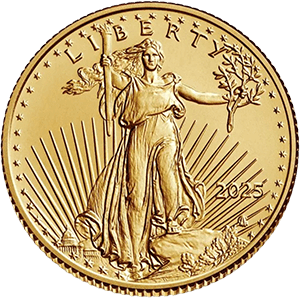If you're watching your 401(k) bounce around like a pinball machine every time the market hiccups, you're not alone. Millions of Americans are discovering that putting some of their retirement eggs in a different basket—specifically, a gold-lined one—might help them sleep better at night.
A Gold IRA rollover lets you move funds from your existing retirement account into a self-directed IRA that holds physical precious metals. Think of it as giving your retirement portfolio a security upgrade, adding an asset that's been valued for thousands of years to your mix of stocks and bonds.
Why Gold IRAs Are Gaining Serious Traction
Many folks watched their retirement accounts drop by 40% in 2008. Then came 2020's wild ride, followed by inflation hitting levels we hadn't seen in decades. It's no wonder people are looking for alternatives to the traditional "stocks and bonds only" approach.
Gold has a unique superpower: it tends to zig when other assets zag. When stocks tumble, gold often holds steady or even climbs. When inflation erodes the dollar's purchasing power, gold typically maintains its value. This isn't some discovery—central banks worldwide have been stockpiling gold for generations for exactly these reasons.
The numbers tell an interesting story. Over the past 20 years, gold has consistently outperformed many traditional investments, particularly during periods of economic uncertainty. While past performance doesn't guarantee future results, it's worth noting that an ounce of gold that cost $300 in 2001 was worth over $1,800 by 2023.
Understanding the Gold IRA Rollover Process
Converting part of your retirement savings to gold isn't as complicated as you might think. The IRS has clear rules that make it possible to move funds from your 401(k), traditional IRA, or other qualified retirement accounts into a Gold IRA without triggering taxes or penalties—if you do it right.
The basic process works like this:
-
You open a self-directed IRA with a custodian who specializes in precious metals.
-
Then, you initiate a rollover from your existing retirement account.
-
Once the funds arrive in your new Gold IRA, you can purchase IRS-approved gold, silver, platinum, or palladium. These metals are stored in an approved depository on your behalf.
Here's where it gets interesting: you have two rollover options. A direct rollover moves money straight from one custodian to another—you never touch the funds. An indirect rollover puts the money in your hands temporarily, but you must deposit it into your Gold IRA within 60 days to avoid taxes and penalties.
Direct Rollover vs Indirect Rollover
When comparing direct and indirect rollovers for your Gold IRA, the differences are significant. Direct rollovers offer a seamless transfer where funds move directly from your existing retirement account to your Gold IRA custodian without ever touching your hands, eliminating tax withholding concerns and simplifying the process. Indirect rollovers, while providing temporary access to funds, come with strict 60-day completion requirements and mandatory 20% tax withholding, which you must cover from personal funds to avoid penalties. Most financial advisors strongly prefer direct rollovers for their simplicity, reduced risk of errors, and elimination of potential tax complications that could cost you substantially in the long run.
Gold IRA Rollover vs. Gold IRA Transfer
A Gold IRA Rollover typically involves moving funds from an employer-sponsored retirement plan (like a 401(k)) to a Gold IRA, often triggering a 60-day time limit and potential tax withholding if handled indirectly
.
In contrast, a Gold IRA Transfer is a direct custodian-to-custodian movement of funds between similar retirement accounts (like IRA to IRA). It involves no handling of funds by the account holder. Has no time restrictions and can be performed unlimited times per year without tax consequences. Most investors prefer transfers for their simplicity and reduced risk of tax penalties when moving between similar account types.
5 Steps to Make Your Rollover Happen
Step 1: Choose Your Gold IRA Company
Begin by investigating firms that focus on serving customers with precious metals IRAs. Look for Gold IRA companies with great reputations, clear fees, and outstanding service. Check their BBB ratings and read the customer reviews. A good company like GMRGold will help you to understand everything without pushing you to make a decision right now.
Step 2: Open Your Self-Directed IRA
After you choose a company, you will complete a new IRA application. This is usually done online in 10-15 minutes or over the phone. You will need basic information, as you would for any kind of government-mandated application, like your Social Security number and current retirement account details.
Step 3: Fund Your Account
This is the magic of rollovers. The company where you have a Gold IRA will help you reach out to the custodian of your existing retirement account. This contact is necessary to start the transfer. For the direct rollover, your money moves electronically between custodians. The whole process usually takes 2-4 weeks.
Step 4: Select Your Precious Metals
You can use the funds in your Gold IRA to buy precious metals approved by the IRS. These consist of certain gold coins, including American Eagles and Canadian Maple Leafs, as well as gold bars that meet the specific purity standards set by the IRS (99.5% for gold). Your Gold IRA company will help you along the way and inform you as to what choices you have and what the costs will be.
Step 5: Secure Storage
An IRS-approved depository is a must for storing your precious metals. Their security and insurance measures are as good as those found in banks, and they undergo audits more frequently than many banks. You can opt for either segregated storage (your metals kept separate) or commingled storage (your metals mixed with others but tracked by serial numbers).
Critical Mistakes to Avoid
The 60-day rule is probably the biggest trap people fall into. If you choose an indirect rollover and don't deposit the funds into your Gold IRA within 60 days, the IRS treats it as a distribution. That means taxes plus a 10% early withdrawal penalty if you're under 59½.
Another common mistake? Trying to use collectible coins or jewelry in your IRA. The IRS has strict rules about what qualifies. Stick with approved bullion and coins to avoid problems.
Some folks also forget about required minimum distributions (RMDs). Once you hit 73, you must start taking distributions from your Gold IRA just like any other retirement account. Your custodian can help you handle this by either distributing cash or the actual metals.
Costs and Considerations
Let's talk money. Gold IRAs typically involve several fees:
-
Setup fees (usually $50-$150)
-
Annual custodian fees ($75-$300)
-
Storage fees ($100-$300 per year)
-
Transaction fees when buying or selling metals
While these fees are higher than a standard IRA, many investors find the diversification benefits worth the extra cost. Some companies offer fee waivers or discounts for larger accounts, so it pays to shop around.
FAQs on Gold IRA Rollover
Can I rollover my 401(k) while still employed?
It depends on your plan. Some employers allow "in-service" rollovers after age 59½, while others require you to leave the company first. Check with your HR department or plan administrator for specific rules.
How long does the entire rollover process take?
From opening your Gold IRA to having metals in storage, expect 2-4 weeks for a direct rollover. Indirect rollovers can be faster but carry more risk if you miss the 60-day deadline.
What happens if gold prices drop after I invest?
Like any investment, gold prices fluctuate. However, Gold IRAs are typically long-term strategies. Historical data shows gold tends to maintain value over extended periods, especially during economic uncertainty. The key is viewing it as portfolio insurance rather than a get-rich-quick scheme.


